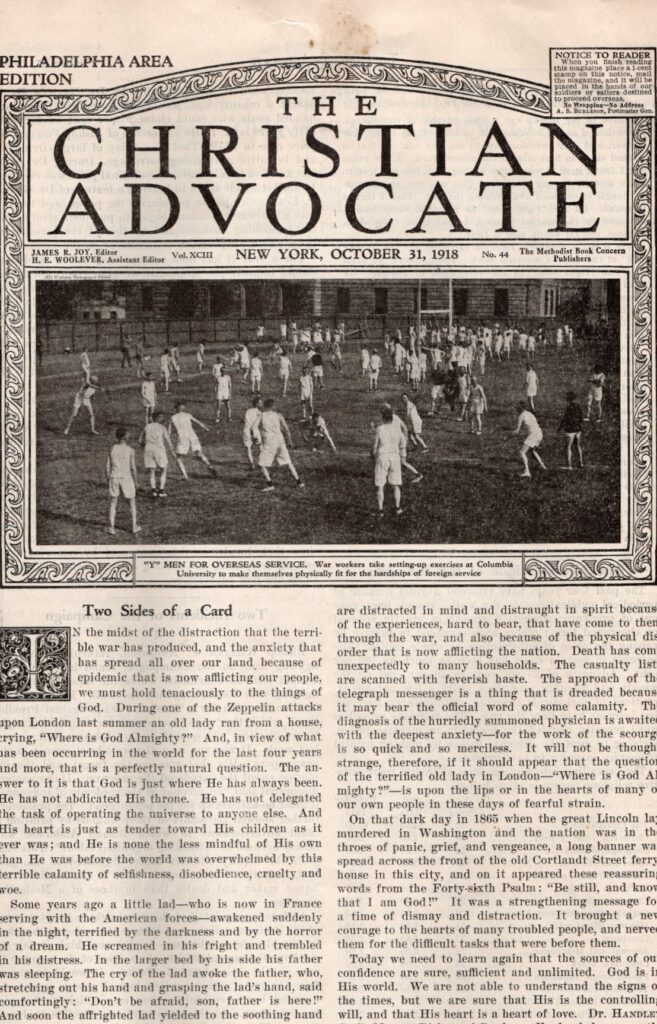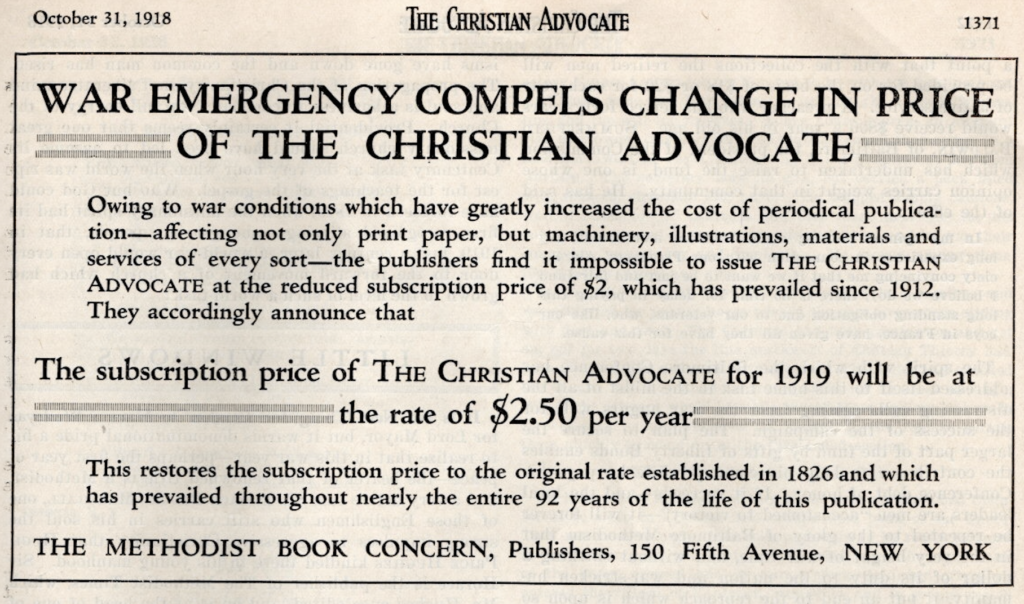Rev. John P. Feagins
As the 2024 General Conference approaches this month, delegates will navigate hundreds of pages of petitions and other proposals. These proposals have been organized and published into a document called The Advance Daily Christian Advocate (ADCA). Similarly, during General Conference, the legislative process will be documented and published on a daily basis in a publication called The Daily Christian Advocate (DCA), now an online publication that requires special credentials to access.
The Daily Christian Advocate derives its name from its original publisher, The Christian Advocate, a newsprint publication of the Methodist Episcopal Church that went from weekly to daily publication during the proceedings of General Conference, but today, the scope and purpose of these two publications could not be more opposite.
Whereas the DCA is directed entirely towards United Methodists who have peculiar interests in the political progress of the UMC General Conference, The Christian Advocate was a full-service, subscription supported newspaper. Published by the Book Concern of the Methodist Episcopal Church throughout the 19th and early 20th century, The Christian Advocate was directed to the general public with a national readership. At its peak, it was the most widely read newsprint publication in the United States of America. Delivered by mail, The Christian Advocate was made available to readers for $2.50 per year which is equivalent to $66.00 U.S.D. in 2024.
On a weekly basis, a diverse cohort of writers shared relevant news, announcements, and commentary on a wide range of topics ranging from international politics to local concerns. Within the 30 pages of the 1918 edition pictured below are found articles relating to World War One and the Spanish Flu epidemic speaking of church closures, face coverings, and ministries using media to retain contact with isolated faithful.


The decline of The Christian Advocate began with a shift from broad, general and secular engagement, to parochial concerns, becoming a magazine designed for Methodist families. This significantly reduced its relevance and readership until it was finally cancelled in 19751, its only remnant being the very narrowly focused Daily Christian Advocate that is relevant only to a small politically connected subset of church members.
Once the hallmark publication of Methodism and its claim to cultural relevance, The Christian Advocate is by far not the only print-media publication to go extinct over the past 100 years. Some of those reading this may remember recently cancelled print media publications such as The United Methodist Reporter, Circuit Rider, Interpreter, World Outlook (New World Outlook). A Google Search of “Methodist Magazine” produces a periodical published by the for-profit Methodist Healthcare System of South Texas. To my knowledge, among UMC published periodicals, only The Upper Room and Response remain available in print format for a subscription.2
The decline of our written witness extends well beyond magazines and newspapers. Hardly a decade has passed since Cokesbury closed its public-facing Christian book and gift stores. The United Methodist Publishing House no longer produces Sunday School material in Spanish and very little for other specialized use, opting to only publish that which can generate profit.
Digital blogs and websites have lowered costs, improved access, and helped us hear new and diverse perspectives, but how many of these gifted writers, working alone, can produce something relevant enough to serve the general public? Where can we find a United Methodist publication we would be proud to see for sale in grocery stores, restaurants, bus stops, and laundromats? Several United Methodist periodicals have successfully transitioned to digital format, but none can compare with the scope, liberality, relevance, and readership of The Christian Advocate.
The century long transformation of The Christian Advocate into The Daily Christian Advocate can offer us insights into greater patterns of institutional decline as we identify the following factors:
1. Shift from public and cultural relevance to internal church communication.
2. Shift from dialogical, critical, and independent journalism to institutionally curated content.
3. Shift from sacrificial investment in mission and witness to profit-seeking.
Last week, many of us received an email from the United Methodist News Service appealing for donations. Disaffiliation, decline, and draconian budget cuts are striking all our general agencies very hard. As the UMC concentrates its resources away from the margins of the church, our written and lived witness also suffers.
The upcoming 2024 General Conference will be defined by its response to the crises of antagonism, institutional disintegration, and unsustainable colonialism. Delegates will either affirm new pathways to justice and renewed vitality or put the UMC at risk of becoming a failed state. In the face of such a challenge, much could be learned by putting down the Daily Christian Advocate and prayerfully picking up The Christian Advocate.